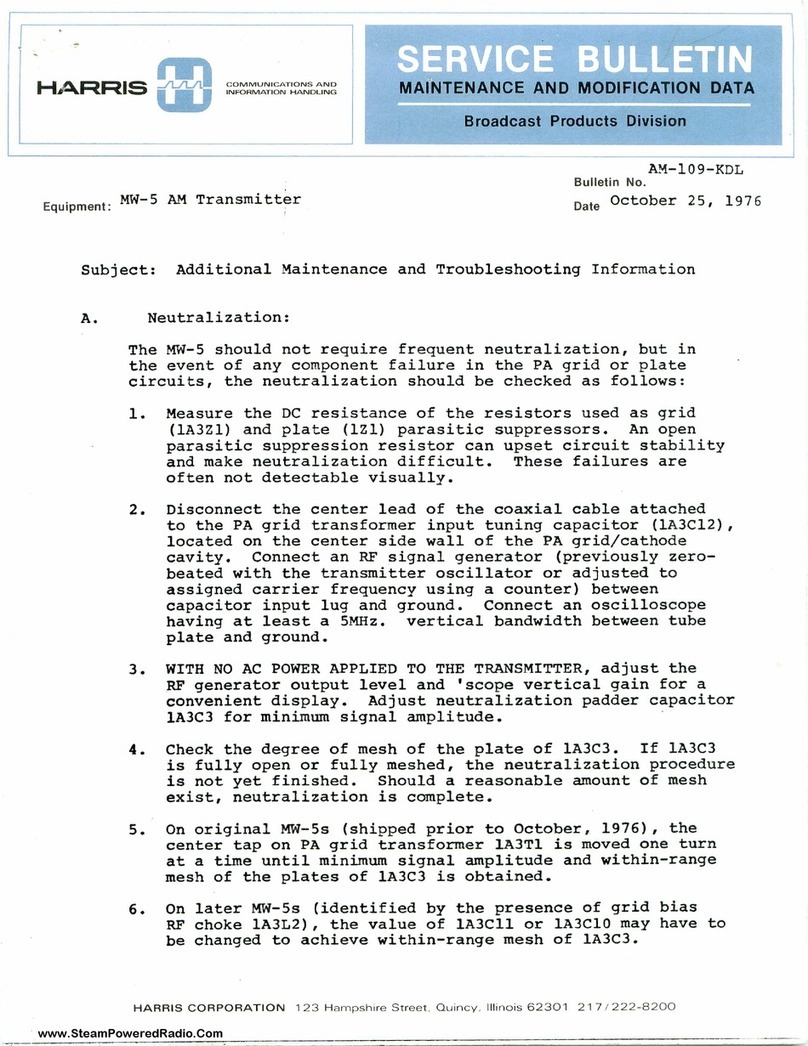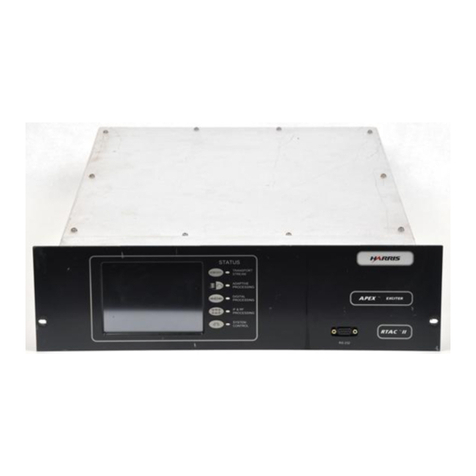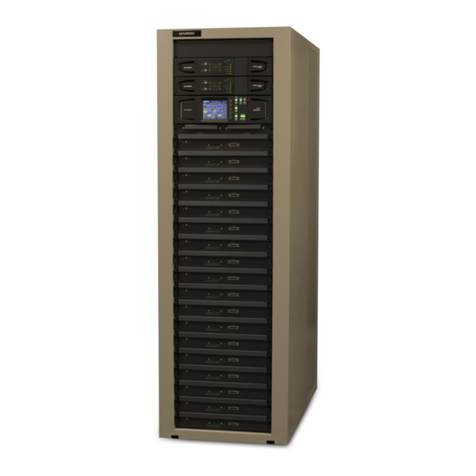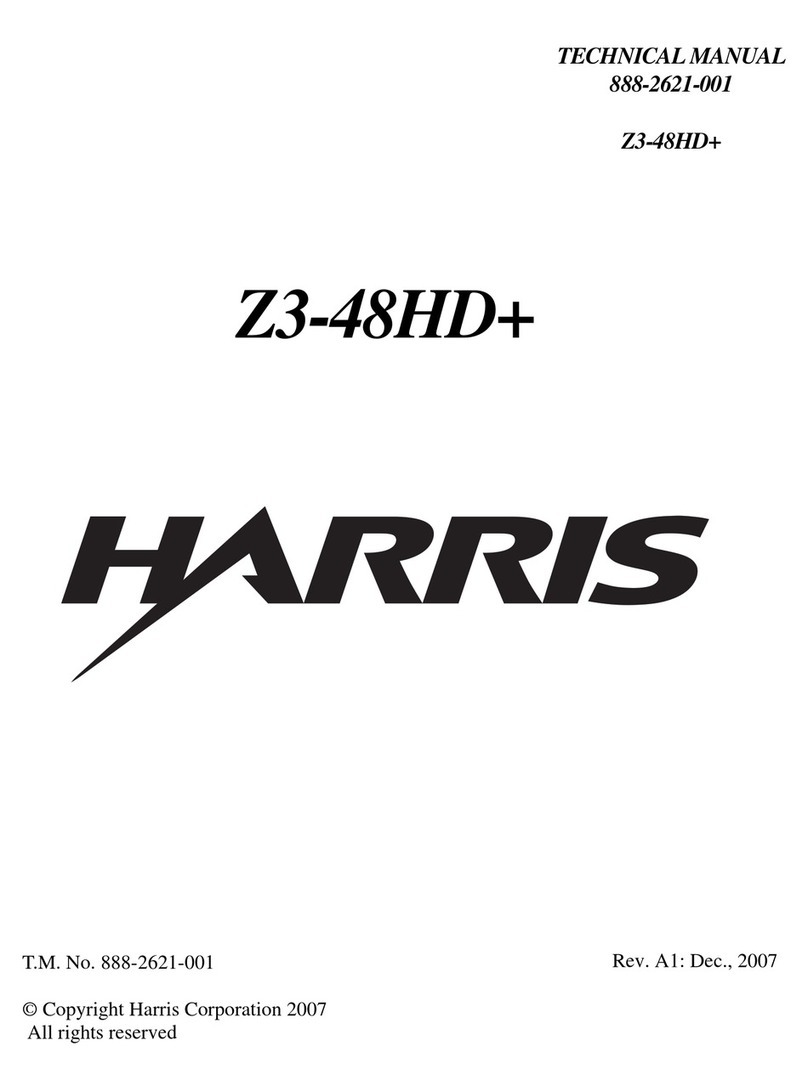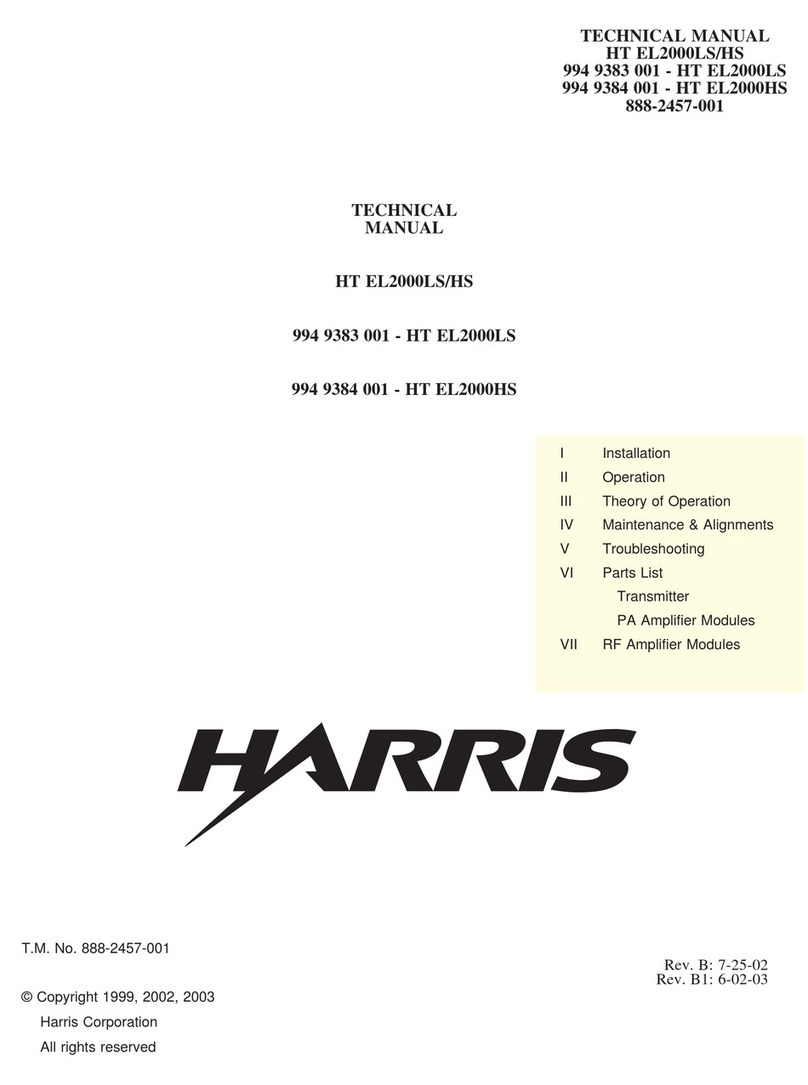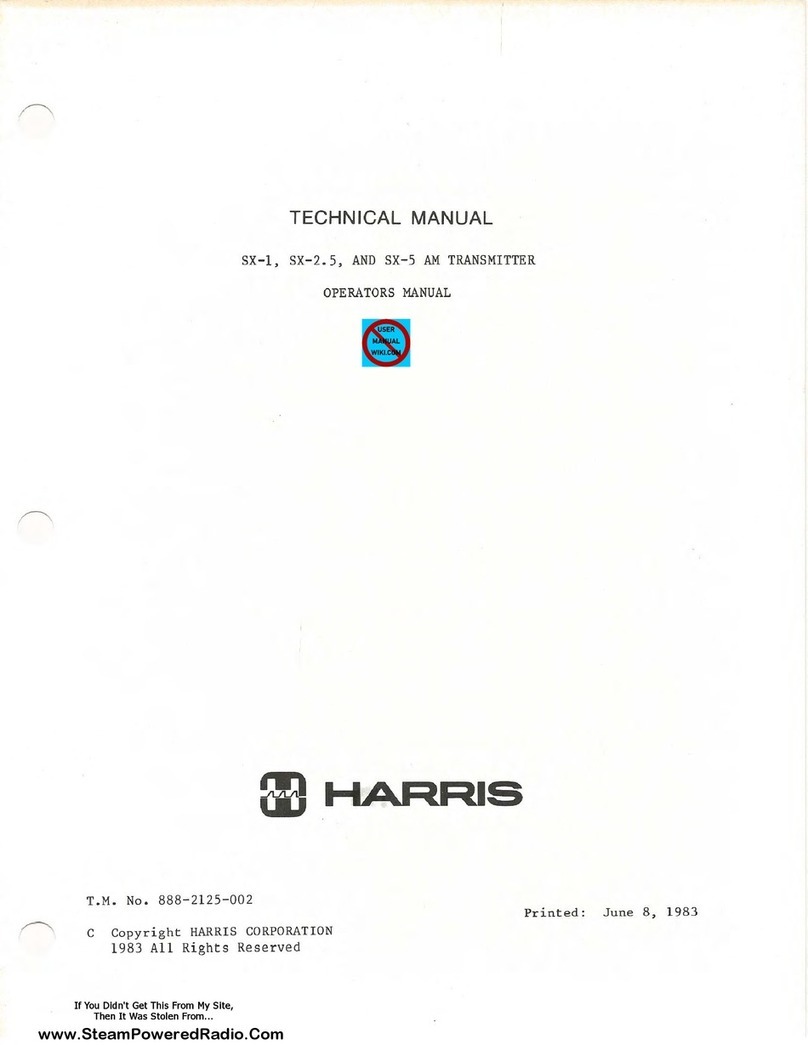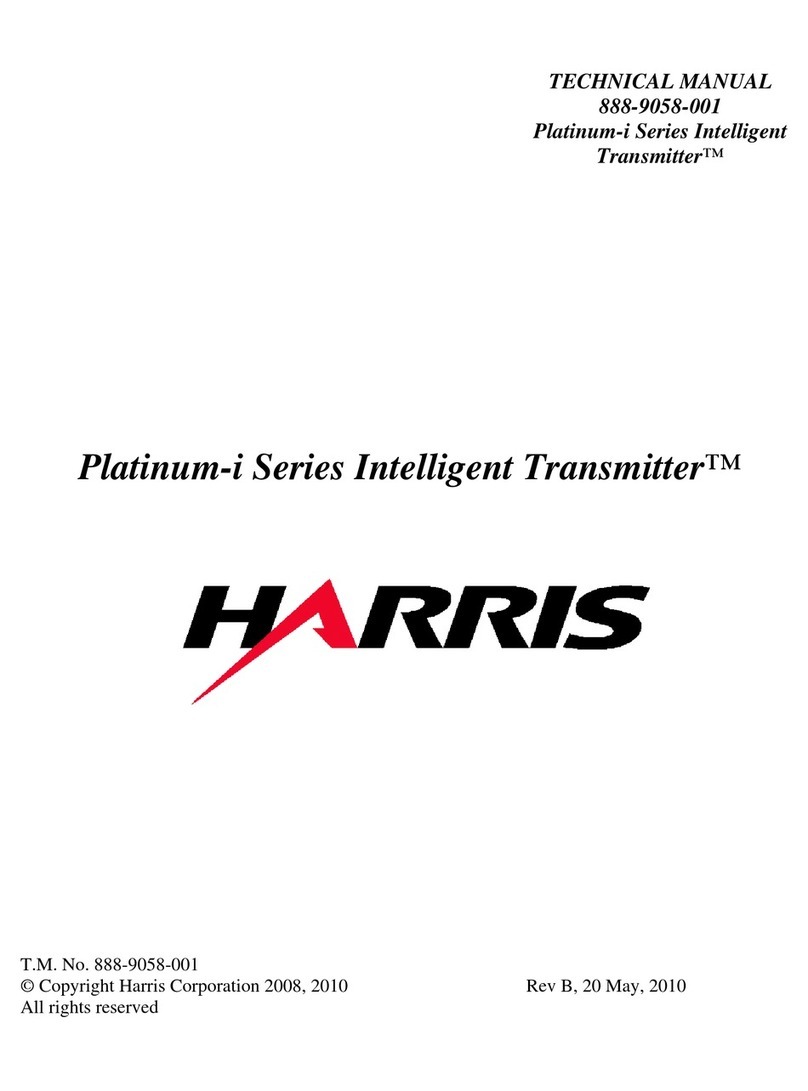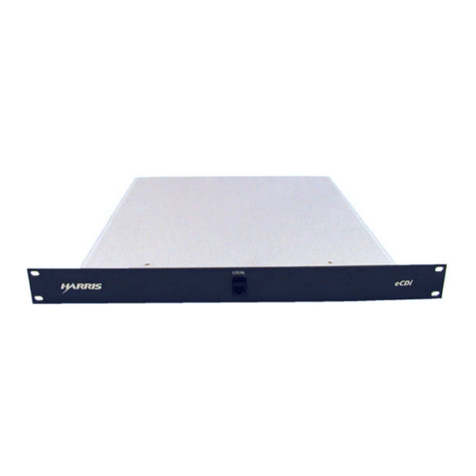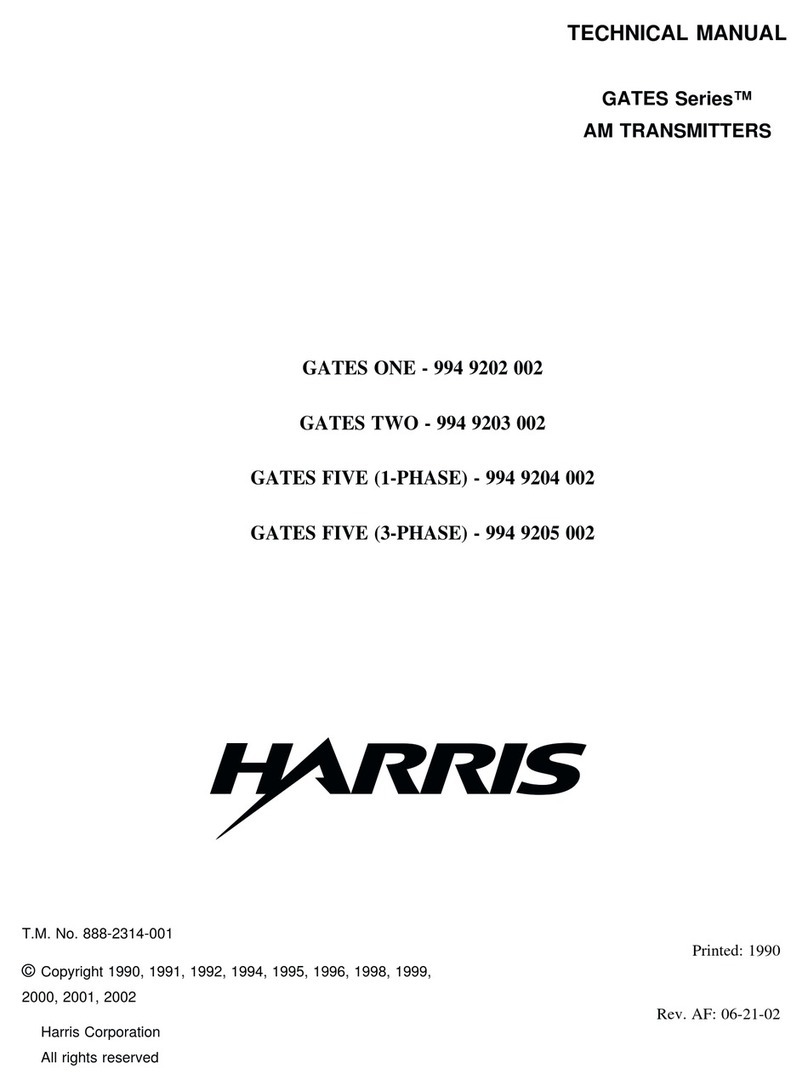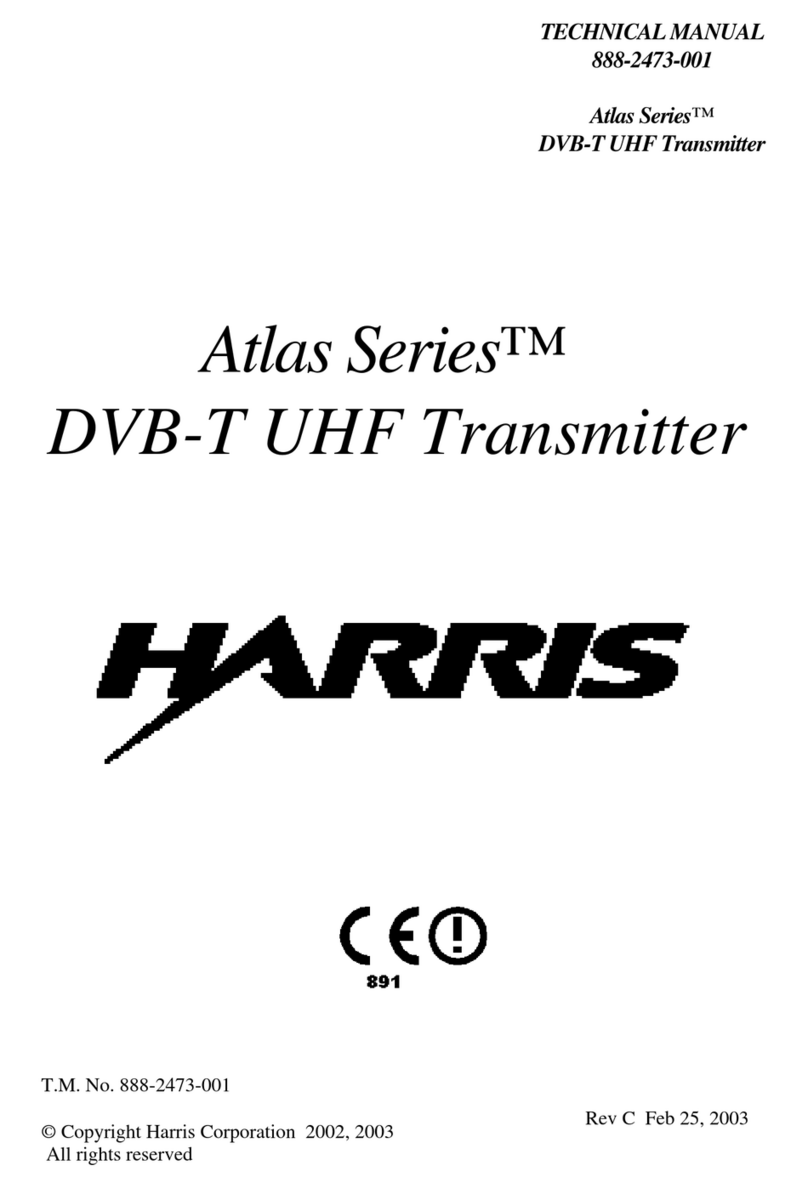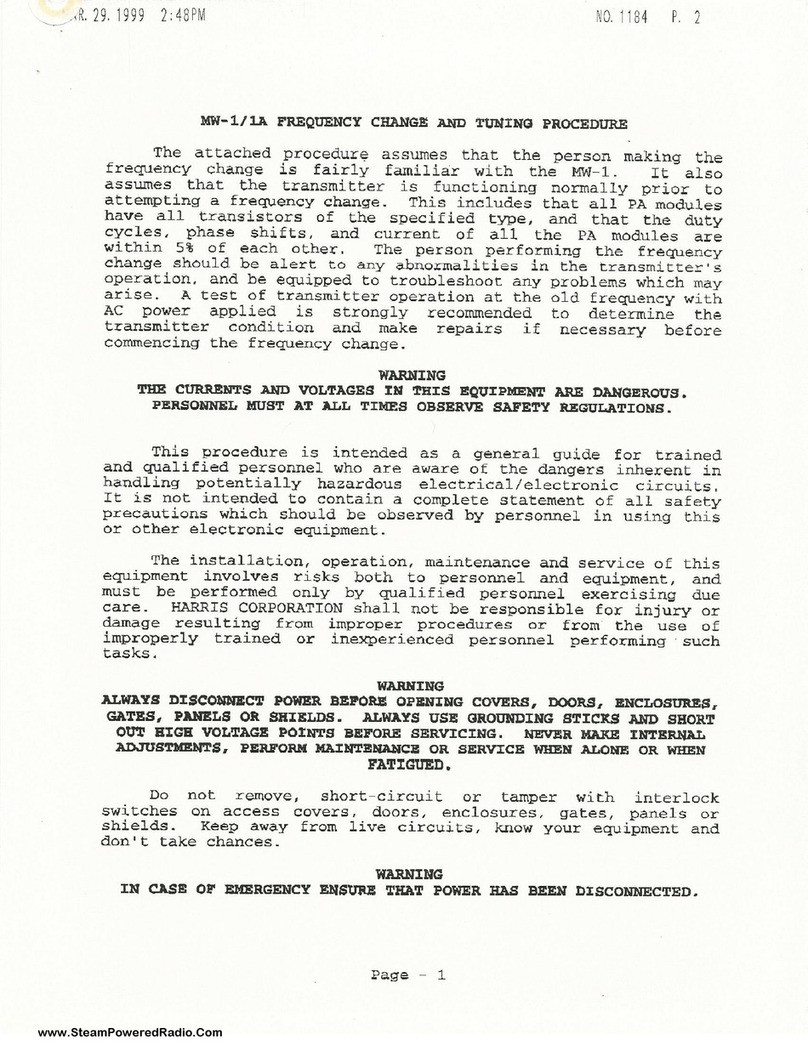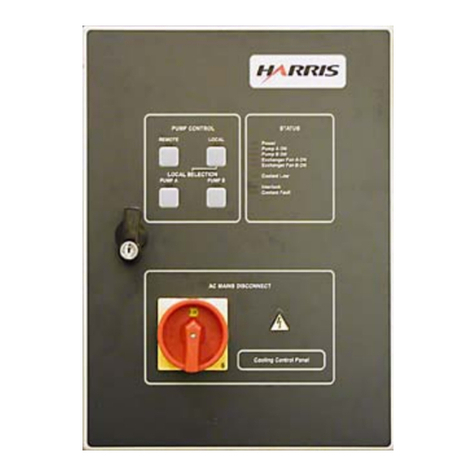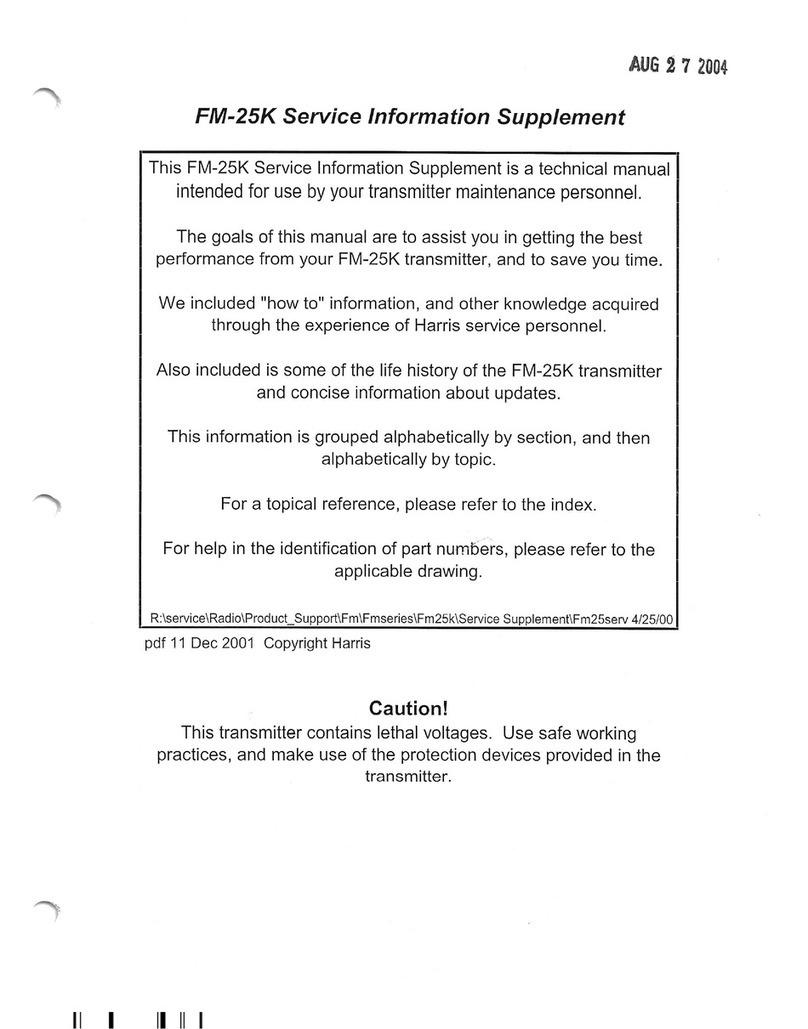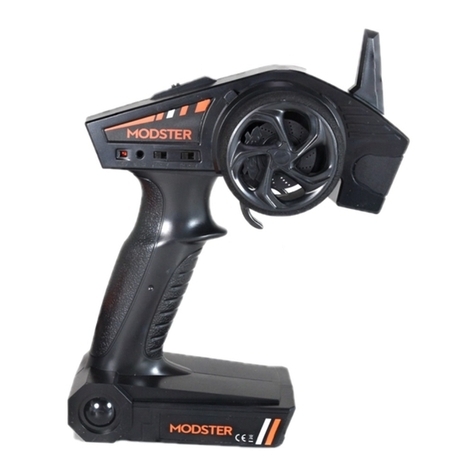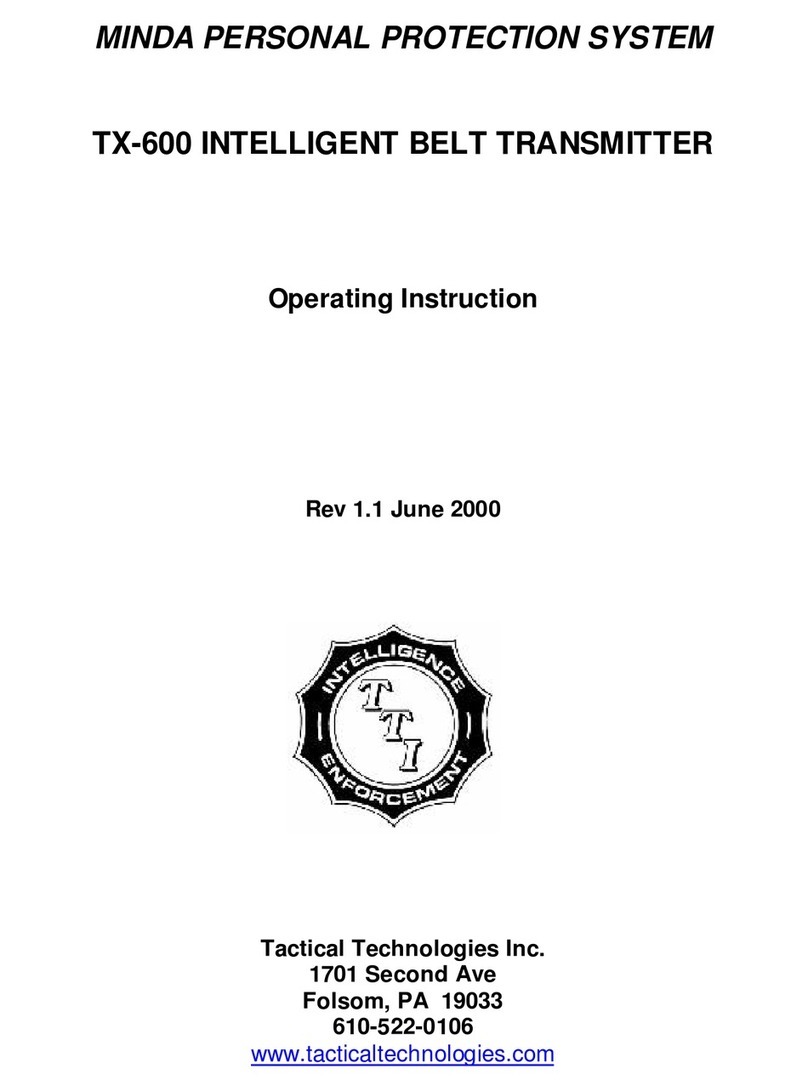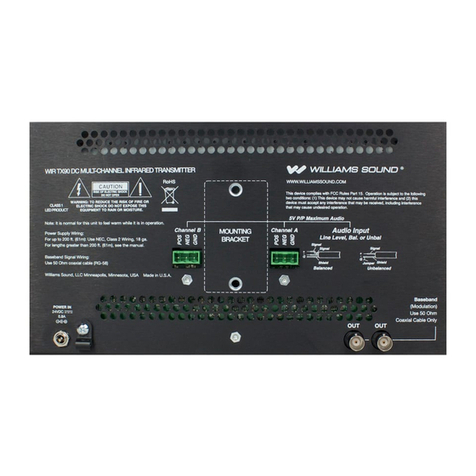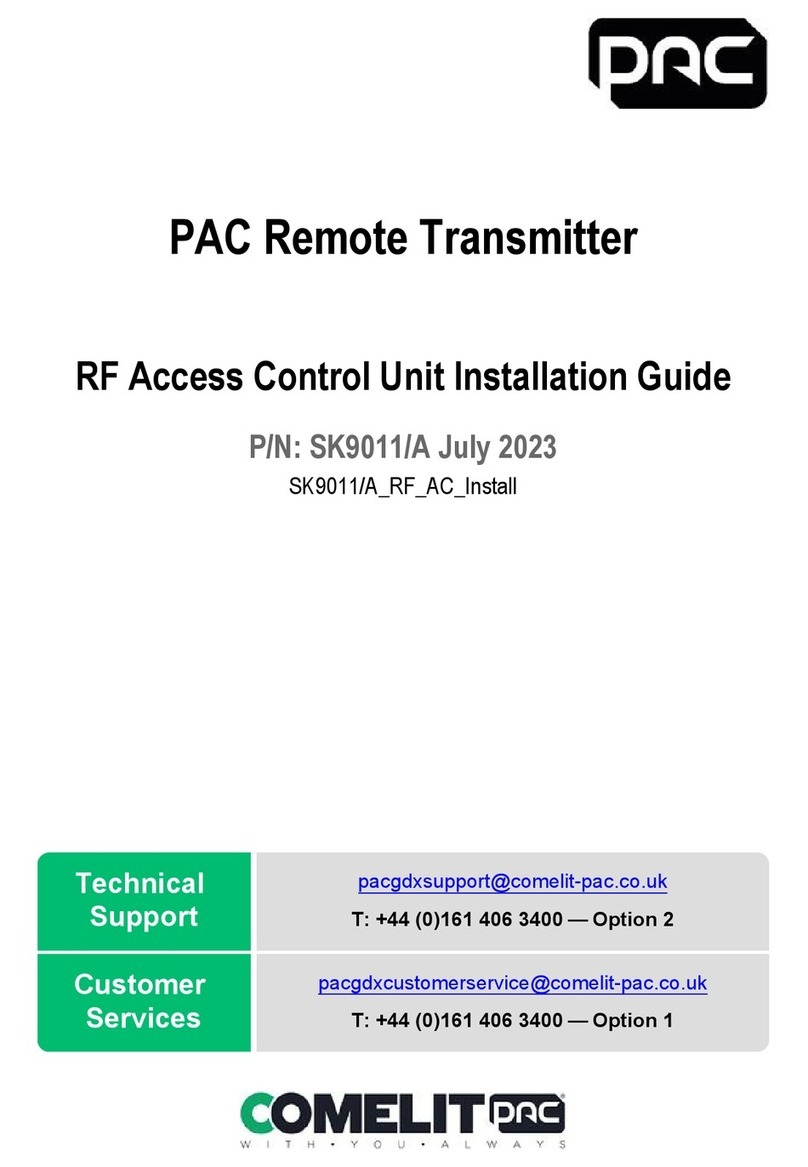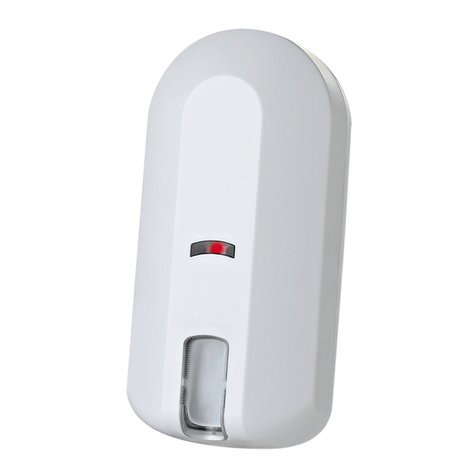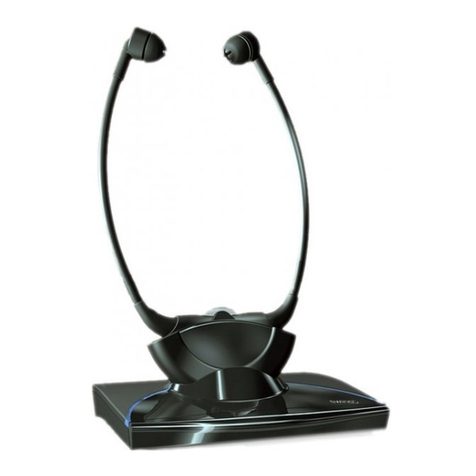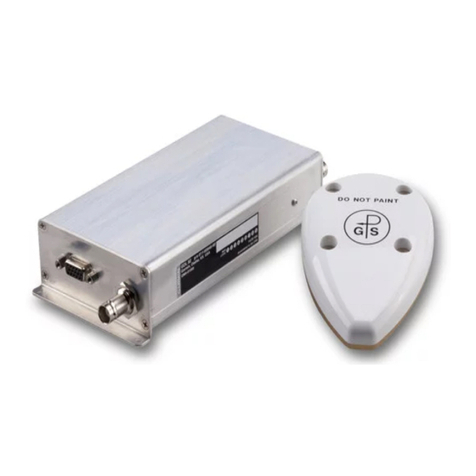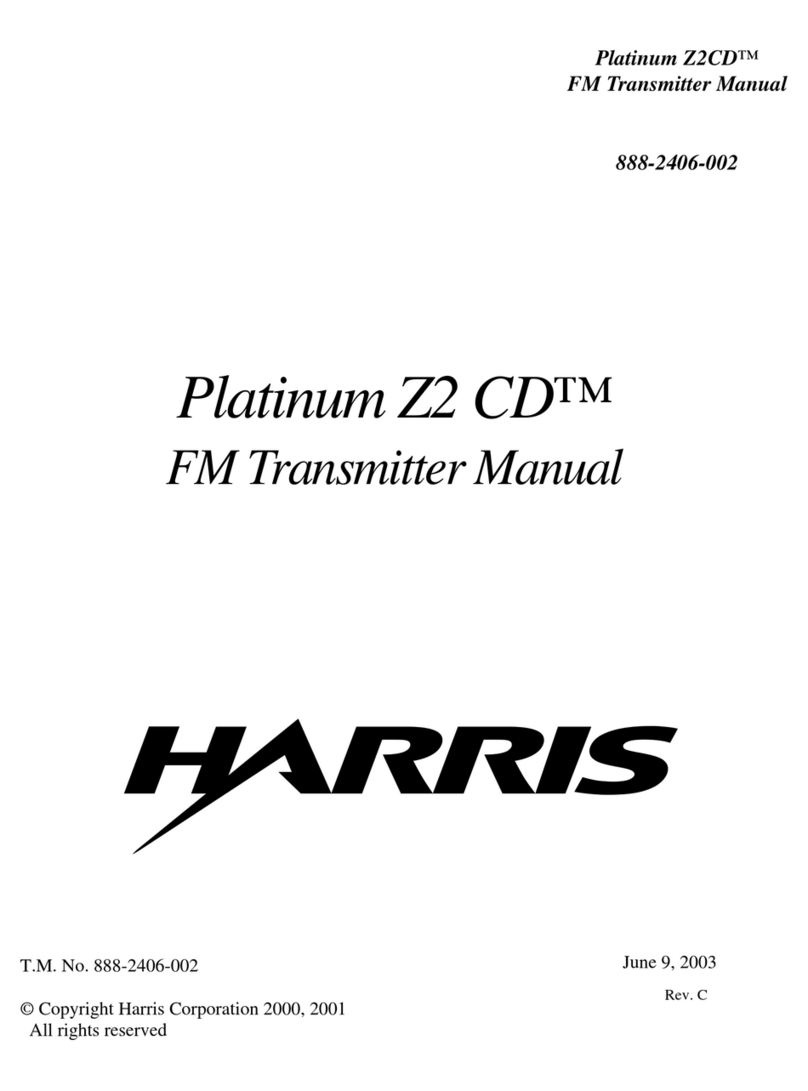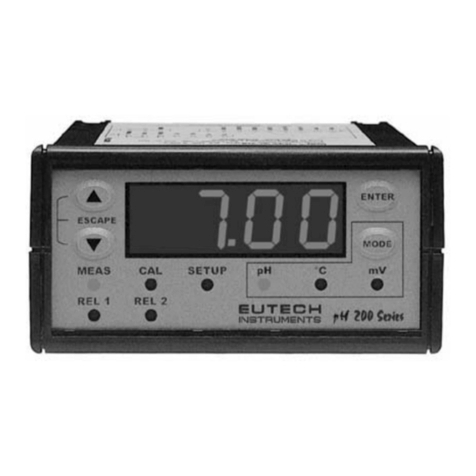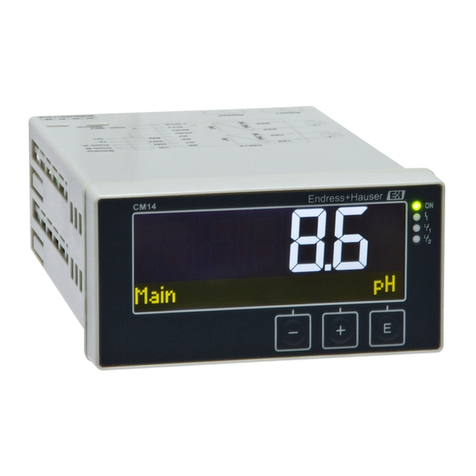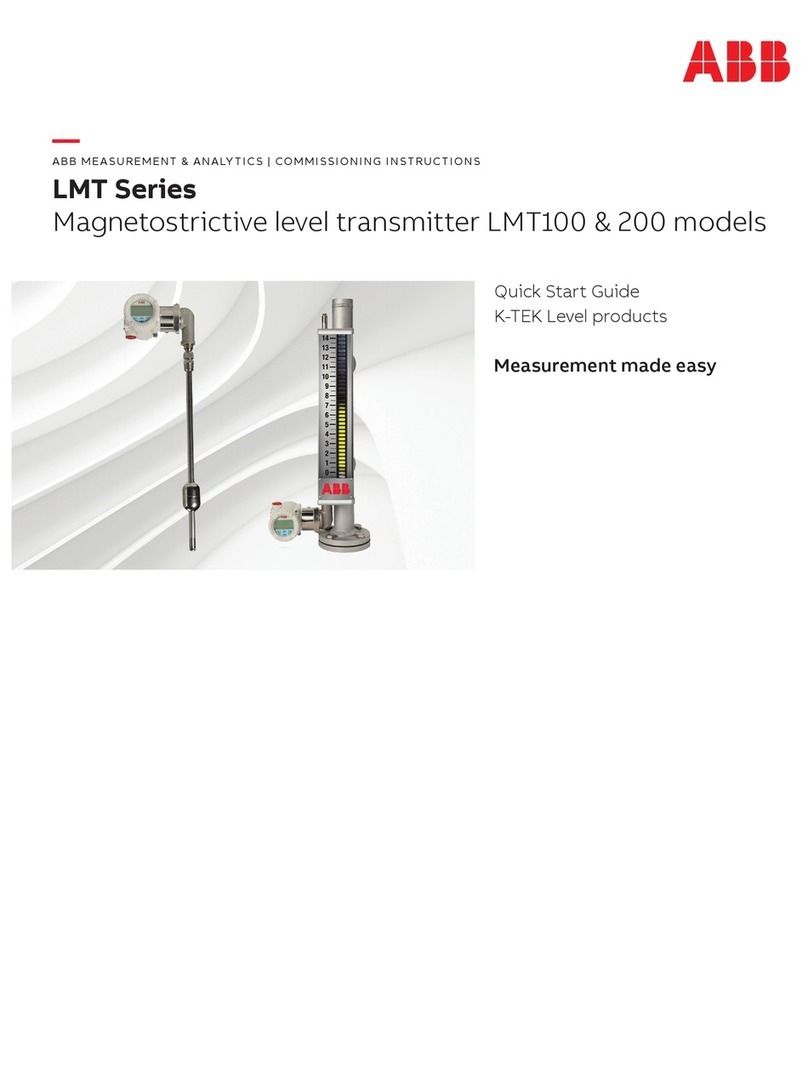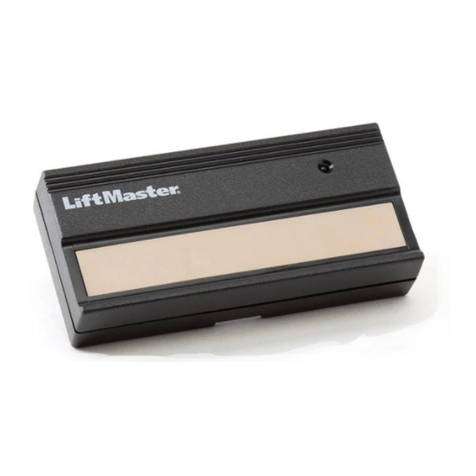
www.SteamPoweredRadio.Com
2.1.
Introduction
This section contains information for the
installation
of
the low powerHT line
of
FM
BROADCAST
TRANSMITIERS
and for
performingthepreoperationalchecks. Gen-
erally, the individualchassis assemblies are
individually packed for shipment and must
be
installed in the appropriate rack shelf.
These components will
be
identified with
appropriate instructions for reinstallation
and wiring.
2.1
.1.
Unpacking
Carefully unpack the
FM
Transmitter and
perform a visual inspection to determine
that
no
apparent damage was incurred dur-
ing shipment. Retainthe shipping materials
until it has been determined that the unit is
not damaged. Thecontents
of
the shipment
should
be
as
indicated
on
the packing list.
If
the contents are incomplete or
if
the unit
is damaged electrically or mechanically,
notifythe carrierandHARRIS CORPORA-
TION, Broadcast Division.
2.1.2. Returns and Exchanges
Damaged
or
undamaged
equipment
should not
be
returned unless written ap-
proval and a Return Authorization is re-
ceived from HARRIS CORPORATION,
Broadcast Division. Special shipping in-
structions and coding will
be
provided to
assure proper handling. Complete details
regarding circumstances andreasons for re-
turn are to
be
included in the request for
return. Custom equipment or special order
equipment is not returnable.
In
those in-
stances where return
or
exchange
of
equip-
ment is at the request
of
the customer,
or
convenience
of
the customer, a restocking
fee will
be
charged. All returns will
be
sent
freight prepaid and properly insured by the
customer.
When
communicating
with
HARRIS CORPORATION, Broadcast Di-
vision, specify the HARRIS OrderNumber
or
Invoice Number.
2.2.
Installation
Prior to installation, this Technical Man-
ual and the
FM
Exciter Technical Manual
should
be
carefully studiedto obtain a thor-
ough understanding
of
theprinciples
of
op-
eration, circuitry and nomenclature. This
will
facilitate proper installation and initial
checkout. The
FM
Transniitter installation
is accomplished infour steps: (1) transmit-
ter placement, (2) component installation,
(3)
transmitter wiring, and
(4)
initial check-
out.
SECTION
II
INSTALLATION
2.2.1. Cooling Air Requirements
Harris transmitters are alwaysdesigned to
operateina free, unobstructed environment
with a maximum inlet
air
temperature
of
50°C. This means that the transmitter air
system is designed to supply sufficient air
at the required static pressure to cool the
transmitter only. Any additional pressure
loses introduced by air exhaust systems &
air supply systems must
be
satisfied by
means other than the transmitter blowers.
These inlet & exhaust systems generally
need to
be
fan driven.
2.2.2. Transmitter Placement
Set the transmitter in place
on
a level
surfacenearpowerandsignal cables. Either
side
of
the
FM
Transmitter may be placed
against a wall or other equipment. Com-
plete access is through the front and rear
of
the transmitter.
The floor must be capable
of
supporting a
load
of
120poundsper-square-foot(58.6kg
per-square-meter) (refer to applicable cabi-
net outline drawing listed in Section 7).
2.2.3. Component Installation
The removal
of
components varies due to
the method
of
shipment. All removeditems
will
be
tagged to aid reinstallation in the
transmitter. Arrange these components in
separate groups according to the section
from which they were removed. Items such
as interconnecting wires and cables and
miscellaneous small parts may
be
taped
or
tied
in
for shipment. Remove all tape,
string, and packing material that has been
usedfor this purpose. Symbol numbers and
descriptions are provided
on
each removed
component corresponding to the schematic
diagram,parts list, andpacking list. Symbol
numbers are also stenciled in the cabinet
of
eachremoveditem.Terminals andwires are
tagged with in formation telling how to
reconnect each item. Mounting hardware
should
be
found either in small bags at-
tached to each remov
ed
component or in-
serted
in
the
tapped
holes where
each
component mounts. Reinstall each compo-
nent in its proper location.
2.2.3.1. Reassembly Instructions
Depending
on
the particular model and
the method
of
shipment,itmaybenecessary
to reassemble the Transmitter. Each
of
the
separate chassis assemblies fits onto a shelf
which is then fitted into a cabinet rack.
On
some models, the Transmitter can
be
pur-
chased for installationinto an existing rack.
888-2312-001
In
any case, it is important to stack the
individual componentchassis in the proper
order to obtain optimumperformance.
The
exciter,
THE-1,
is on top and theController
next. ThePowerAmplifiersarelowest.This
configuration assures minimuminteraction
between units, and maintains a low center
of
gravity.
If
the Transmitter has been shipped
in
the
rack, it will be necessary to remove the
shipping hardware
on
the Power Ampli-
fier(s). To prevent movement during ship-
ping, two screws are usedto secure therear
end
of
the chassis to the mounting shelf.
These must
be
removed. starting with the
lower chassis. There are
no
rear screws
on
the Controller or Exciter.
The ac input for the transmitter should
come from low impedance, 50/60 Hz, sin-
glephase supply with sufficient capacity to
supply the transmitter. A terminal board is
locatedinside the AC distributionassembly
for ac power connections.
The
list that fol-
lows gives the circuit breaker
or
fuse and
disconnectrecommendedfor thelowpower
HT
transmitter line.
Transmitter Type
Circuit
Breaker
or
Fuse
&
Disconnect
HT250FM
IO
amp
HT500FM
15amp
HTlFM
3 °
~amp
The ac input wiring should
be
in
agree-
mentwithlocal electrical codes andcapable
of
supplying the transmitterpower require-
ments. An ac primary power disconnect
or
means to completely deenergize the
trans-
mitter primary circuit for servicing is nec-
essary.
If
the program leads must
be
routed
in close proximity to the ac power input
wiring, the program leads should be sepa-
rately shielded.
Agood ground at
FM
frequencies is man-
datory to keep stray
rf
currents to a mini-
mum.
RF
interference usually shows up
in
one
of
two ways, feedback
or
highnoise(in
some cases both). Even a small amount
of
non-shielded wire makes
a
very efficient
antenna for
FM
frequencies.
If
rf
from the
cabinet field is transferred to the audio
equipment,itcanberectified andmayshow
up
as
noise
or
feedback. A single common
ground pointfrom the transmitter base to a
good grounding system, such
as
a
water
pipe
or
actual
earth
ground
is recom-
2-1
WARNING: Dis
crnt1H'Ct
primary power prior to servicing.



















